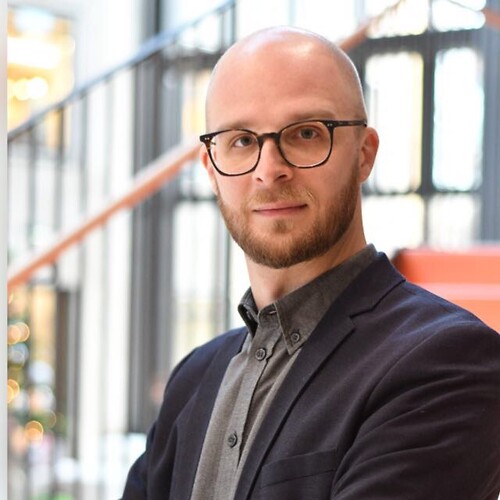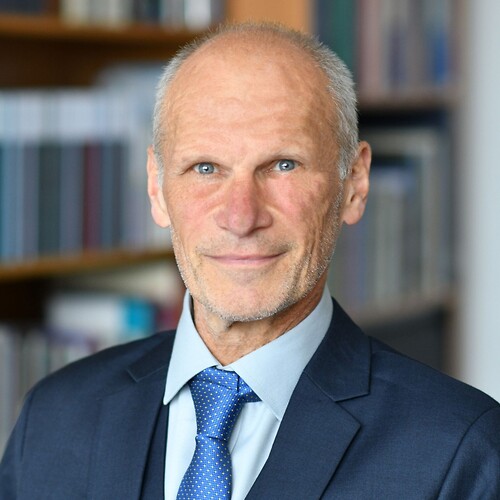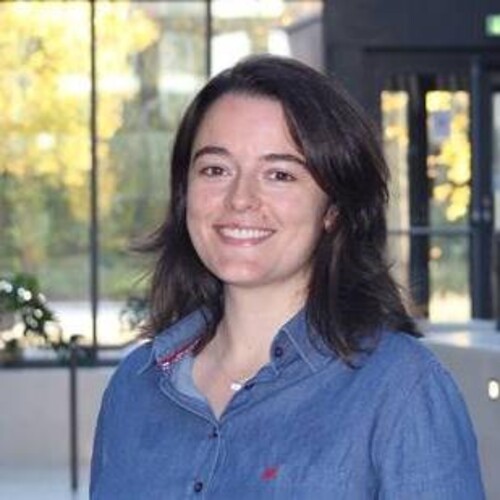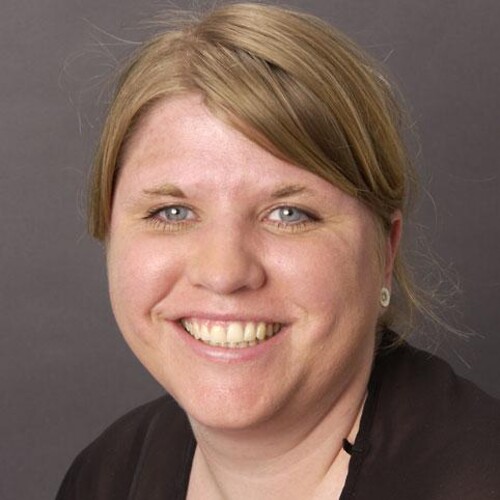 Korbinian LöbmannChief Scientific Officer and Co-founder ModeratorKorbinian Löbmann has a PhD in pharmaceutical sciences and a strong track record in pharmaceutical formulation and drug delivery with more than 10 years of experience in solid formulation and dosage form development. This includes in particular the development of new enabling formulation strategies for poorly soluble drugs using amorphous drug delivery systems. He is co-founder and CSO of the pharmaceutical company ZERION, a spinout from the University of Copenhagen, which is based on the proprietary solubility enhancing Dispersome® technology. He has authored more than 100 peer-reviewed papers and patents. |
Mai Bay StiePostdoc, Department of Pharmacy Delivery of drugs in the oral cavity – Opportunities of a new patch technologyDrug delivery through the mucosa inside the mouth provides a direct entry into the systemic circulation that can improve drug bioavailability and lead to faster onset of action as compared to the conventional oral route by swallowable tablets. Oromucosal administration is not only highly convenient for patients but also benefits from bypassing the harsh environment of the gastrointestinal tract and the first-pass metabolism of the liver that is beneficial for a broad range of drugs.Here, we present a proprietary patch technology, the X-patch, for delivery of drugs inside the mouth. Benefits of X-Patch include: • Great convenience and self-administration e.g., by the patch being placed under the lip • Superior mucoadhesion and patch design to allow patient drinking/eating • Easy/tunable fabrication by layer-by-layer design (versatile drug loading capability) • Tunable drug release/pharmacokinetic profile • Cheap and safe materials, no toxic solvents Mai Bay Stie has a PhD in pharmaceutical sciences and is currently a Postdoc at the Department of Pharmacy at University of Copenhagen. Her strong expertise lies in innovative formulation design and drug delivery with a focus on the development of mucoadhesive patches for the oral cavity. She is one of the main inventors of the proprietary X-Patch technology and heading a dedicated team towards establishing a spin-out (pending) based on the technology. |
 Thomas RadesResearch Chair in Pharmaceutical Design and Drug Delivery Order and disorder in pharmaceutical solids – and what they mean for drug deliveryIn this presentation we will discuss the various forms in which solid materials of the same chemical compound can occur, how these can be characterized and how their properties may differ. Whilst focus will be on amorphous systems of drugs, also polymorphic crystalline solids as well as thermotropic liquid crystalline materials will be discussed. The importance of the presence of different solid-state forms of drugs for their further development into solid oral dosage forms will also be highlighted. This presentation is of particular interest for those dealing with solid dosage form development.Since March 2012 Professor Thomas Rades is the Research Chair in Pharmaceutical Design and Drug Delivery in the Department of Pharmacy, University of Copenhagen. Before that he has been the Chair in Pharmaceutical Sciences at the National School of Pharmacy, University of Otago, New Zealand from 2003 – 2012. In 1994 he received a PhD from the University of Braunschweig, Germany for his work on thermotropic and lyotropic liquid crystalline drugs. After working as a Research Scientist in the Preclinical Development and Formulation at F. Hoffmann-La Roche in Basel, Switzerland, he became a Senior Lecturer in Pharmaceutical Sciences at Otago in 1999 and since 2003 held the Chair in Pharmaceutical Sciences in Otago. Professor Rades has developed an international reputation for his research in the physical characterization of drugs and solid dosage forms. He has published more than 540 papers in international peer reviewed journals as well as 17 book chapters, 13 patents and 3 books. Professor Rades is the Editor-in-Chief of the European Journal of Pharmaceutics Biopharmaceutics. He holds an honorary doctorates of Åbo Akademi University, Finland, and the University of Helsinki, Finland. He also holds an honorary professorship at the University of Otago, New Zealand. He is an Eminent Fellow of the Academy of Pharmaceutical Sciences (UK), a Fellow of the American Association of Pharmaceutical Sciences (AAPS), a member of the College of Fellows of the Controlled Release Society (CRS), and a Fellow of the New Zealand Institute of Chemistry (NZIC). Professor Rades has successfully supervised more than 85 PhD students. For his undergraduate and postgraduate teaching he was awarded the New Zealand Tertiary Teaching Excellence Award for Sustained Excellence (2005). Current research projects include: Amorphous drugs, co-amorphous drug delivery systems, solubility of drugs in solid polymers, combination of amorphous forms of drugs with lipid based drug delivery systems. |
 Inês C. B. MartinsAssociate Professor, Department of Pharmacy Investigation of polyAmorphism – The peculiar cases of hydrochlorothiazide and indomethacinIn this presentation, we will discuss how different preparation methods of an amorphous drug can have influence in its physicochemical properties, including physical stability, solubility and dissolution. In particular, we will draw your attention to an elusive, controversial and highly debated solid-state phenomenon termed polyAmorphism (more than one amorphous form of a drug presenting distinct physicochemical properties). For that, interesting results on the model drugs hydrochlorothiazide and indomethacin will be presented. Focus will be given on their preparation, and thermal and structural characterization, where a combination of both experimental methods and computational modelling lead to unravelling the molecular properties of these peculiar amorphous systems. This presentation is of particular interest for those dealing with the investigation of both structural and physicochemical properties of amorphous forms, with a potential application in solid dosage form development.Inês C. B. Martins is an Associate Professor in the Pharmaceutical Processes and Products group at the Department of Pharmacy, University of Copenhagen, Denmark. She has obtained her PhD in Chemistry in 2018 at the Instituto Superior Técnico (University of Lisbon, Portugal). Her thesis was focused on using combined solid-state structural techniques (powder X-ray diffraction (PXRD) and solid-state NMR) with computational methods (density functional theory calculations) to solve the structure of complex crystalline multicomponent pharmaceutical systems prepared by ball mill grinding (mechanochemistry). After completing her PhD, she was enrolled as an Adolf Martens fellow, for 2-years at the Federal Institute for Materials Research and Testing (BAM), Berlin, Germany. She has acquired expertise on using in-situ methods (PXRD collected at synchrotron facilities such as Bessy II in Berlin and DESY in Hamburg, and Raman spectroscopy) to study the kinetics of organic reactions and co-crystallizations performed by ball mill grinding. From 2021 to 2024, Inês was enrolled as a Postdoctoral Researcher of Prof. Thomas Rades at the Department of Pharmacy, University of Copenhagen, to investigate a controversial and highly debated solid-state phenomenon termed polyamorphism drugs (existence of more than one amorphous form of the same drug) using both solid-state experimental methods and computational modelling. Her current research activities are focused on investigating the formation of polyamorphism and on elucidating its molecular-level organization in pharmaceutical systems. To further investigate this solid state phenomenon and thus to establish a new research area called “amorphous engineering”, Inês was recently awarded a prestigious “Inge Lehmann grant”. |
 Line Hagner NielsenAssociate Professor, DTU Health Tech Targeting bacterial biofilms with in situ hydrogelsChronic rhinosinusitis (CRS) is a persistent inflammation of the paranasal sinuses affecting 13 % of the population. For up to 80 % of CRS patients, bacteria are building up in the sinuses creating bacterial biofilms. Treatment strategies are topical antibiotics and steroids, but it is often not sufficient to keep the infection away. Many patients have endoscopic sinus surgeries which can keep the infections away for a period of time, but recurrence rate of CRS is 79%. It is clear that there is a high need for a non-invasive delivery system for efficient antibiotic treatment to treat CRS. With this in mind, we are developing liquid nasal sprays incorporating antibiotics. When the spray is introduced into the sinuses, it forms a gel on top of the bacteria thereby, combating biofilms locally in the sinuses.Line Hagner Nielsen is an Associate Prof. at DTU Health Tech, Technical University of Denmark (DTU) and heading the Pharmaceutical Technology research group. Line is educated as a pharmacist from University of Copenhagen and received her PhD in 2013, also from University of Copenhagen, within oral delivery of micro devices. Line, now, works with non-invasive drug delivery technologies so drug delivery devices and particles for either the oral, buccal, nasal or dermal administration routes. She is the work package leader in the EU Horizon project “Buccal-Pep” and a grant recipient of a Sapere grant from the Independent Research Fund Denmark from 2023. |
Oliver HedgeSenior Formulation Scientist PharmaShell – The high drug load delivery system enabling the next generation long-acting injectables through atomic layer precisionSustained drug release can improve treatment efficacy, reduce adverse effects, and improve patient compliance. PharmaShell is a versatile microparticle drug delivery platform with an innovative mechanism of action that allows for subcutaneous or local controlled release of small molecules, peptides, and proteins. The release profile can be tailored using atomic layer precision to apply a controlled release coating onto microparticles of the active pharmaceutical ingredient. The PharmaShell technology is currently explored in phase I clinical trials. In this talk, examples of what can be achieved with the technology will be presented, from small molecule to protein applications, including clinical data on the once monthly liraglutide formulation (NEX-22).Dr. Hedge received his PhD in pharmaceutical sciences from Uppsala University, Sweden, with focus on oral delivery of poorly water-soluble APIs. He joined Nanexa AB as a formulation scientist in 2021 and has since then focused his work on long-acting injectables with a special focus on formulation of peptide and protein APIs, including particle and vehicle design, IVIVC, stability, and sterility assurance. |